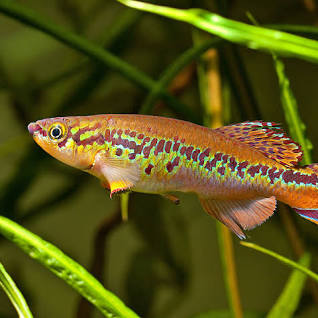Killifish belong to the order Cyprinodontiformes and are primarily small, colorful, freshwater fish. They are classified into several main groups based on their evolutionary lineage and reproductive strategies.

The major groups of killifish include:
1. Annual Killifish
- Found in seasonal pools that dry up.
- Eggs enter diapause (a period of suspended development) to survive dry periods.
- Life cycle is typically short (weeks to months).
- Examples:
- Nothobranchius (Africa)
- Austrolebias (South America)
- Simpsonichthys (South America)
2. Non-Annual Killifish
- Inhabit permanent water bodies such as streams, lakes, and rivers.
- Eggs develop without diapause.
- Typically have a longer lifespan.
- Examples:
- Aphyosemion (Africa)
- Fundulopanchax (Africa)
- Rivulus (Central & South America)
3. Semi-Annual Killifish
- Intermediate between annual and non-annual species.
- Found in areas where water may dry up seasonally but not entirely.
- Some eggs may enter diapause, but not all.
- Examples:
- Pterolebias (South America)
- Hypsolebias (South America)
4. New World Killifish (North & South America)
- Includes both freshwater and brackish species.
- Some are important in mosquito control.
- Examples:
- Fundulus (North America, brackish/freshwater)
- Rivulus (South America)
- Cynolebias (South America, annual)
5. Old World Killifish (Africa, Europe, Asia)
- Many species adapted to temporary water bodies in Africa.
- Some species found in brackish or estuarine environments.
- Examples:
- Aphyosemion (West Africa)
- Nothobranchius (East & Southern Africa)
- Aplocheilus (India, Southeast Asia)